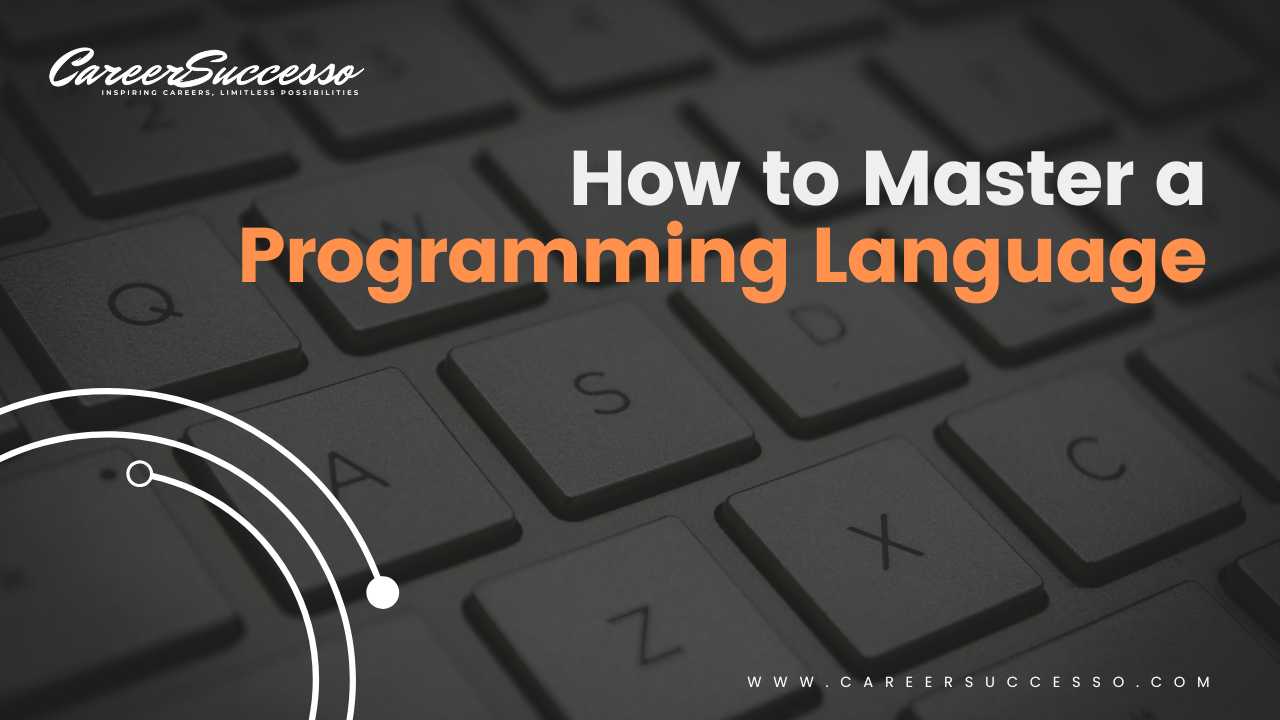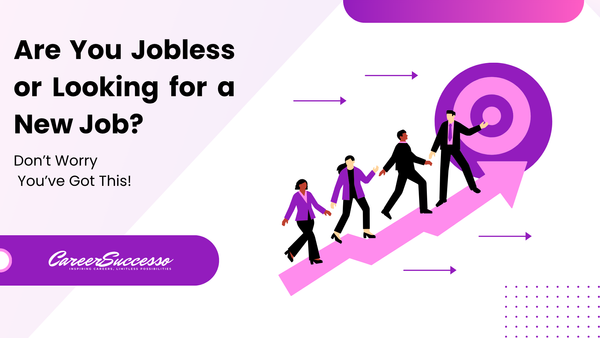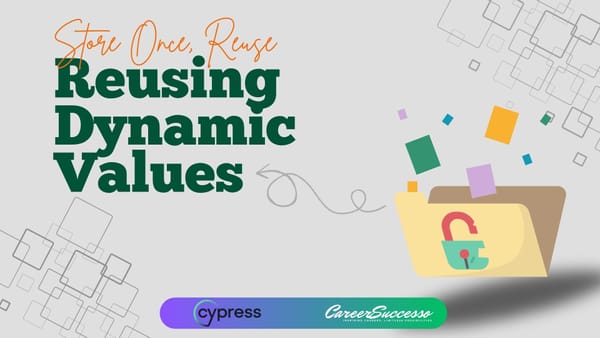How to Master a Programming Language: From Beginner to Expert

Mastering a programming language is a journey that involves dedication, practice, and continuous learning. Whether you're a beginner just starting or an experienced programmer looking to deepen your expertise, there are systematic steps you can take to become proficient in any programming language. This blog post will guide you through the essential steps to master a programming language, from the basics to advanced concepts, providing practical tips and resources along the way.
Step 1: Choose Your Programming Language
Consider the following analogy before you delve into specific languages:
Have you bought the wagon but not the horse? A programming language is merely a tool, akin to a saw, hammer or drill.
Just like a carpenter needs to understand basic carpentry principles before using a saw effectively, you'll benefit greatly from grasping core programming concepts before diving into a particular language. These fundamental concepts are universal and apply across most programming languages.
By understanding these core concepts, you'll be able to:
- Approach any programming language with more ease and proficiency. The underlying principles will be familiar, allowing you to focus on the language's syntax and nuances.
- Become a more versatile programmer. You'll be able to adapt your skills to new languages more readily as your career progresses or your interests change.
- Write cleaner, more efficient, and maintainable code. A solid foundation in programming principles empowers you to solve problems effectively.
Here are some resources to help you solidify your understanding of programming fundamentals:
- Books by Donald Knuth (as suggested in the original text)
- Online courses on fundamental programming concepts (e.g., algorithms, data structures)
- Tutorials on essential programming paradigms (e.g., object-oriented programming, functional programming)
Once you've established a strong foundation in programming fundamentals, you'll be in a fantastic position to select the programming language that best aligns with your interests and career goals. Step 2 (Learn the Basics) of your article can then guide you through the specifics of learning your chosen language.
Step 2: Learn the Basics
Start by learning the basic syntax and semantics of the language. Here are some essential topics to cover:
- Variables and Data Types: Understand how to declare variables and the different data types (e.g., integers, strings, lists).
- Control Structures: Learn about loops (for, while) and conditionals (if, else).
- Functions: Understand how to define and call functions, pass parameters, and return values.
- Basic Input/Output: Learn how to take user input and display output.
Resources:
- Online courses (e.g., Codecademy, Coursera, edX).
- Books (e.g., "Python Crash Course" by Eric Matthes, "Eloquent JavaScript" by Marijn Haverbeke).
- Official documentation and tutorials (e.g., Python.org, MDN Web Docs for JavaScript).
Step 3: Practice Regularly
- Practice Makes Perfect (and Delicious!)
Have you ever enjoyed a particular dish at a restaurant or a meal prepared by a loved one? Imagine if you could ask the chef or cook their secret to creating such a masterpiece. They'd likely tell you about years of practice, countless repetitions, and the unwavering dedication to honing their craft.
Programming is no different. Nothing replaces the value of consistent practice. Just like mastering a recipe, mastering a programming language requires dedication and a willingness to experiment.
- Coding Exercises: Use platforms like LeetCode, HackerRank, and Codewars to solve coding challenges.
- Projects: Start with small projects and gradually increase their complexity. For example, build a simple calculator, a to-do list app, or a basic web scraper.
Tips for Effective Practice:
- Set aside dedicated time each day for coding.
- Focus on understanding the logic behind each exercise rather than just finding the solution.
- Review and refactor your code to improve its efficiency and readability.
Step 4: Build Real-World Projects
Building real-world projects is one of the most effective ways to apply your knowledge and gain practical experience. Projects help you understand how different concepts come together and teach you how to troubleshoot and debug issues.
Project Ideas:
- Web Development: Create a personal website or a blog using HTML, CSS, and JavaScript. Use frameworks like Django or Flask for back-end development in Python.
- Data Science: Analyze datasets using Python libraries like Pandas and Matplotlib. Build a simple machine learning model using scikit-learn.
- Mobile App Development: Develop a mobile app using Java for Android or Swift for iOS. Alternatively, use React Native to create a cross-platform app.
Tips for Building Projects:
- Start with a clear plan and break the project into manageable tasks.
- Use version control systems like Git to track your progress.
- Document your code and create a README file to explain your project.
Step 5: Think Like a Programmer
Developing a programmer's mindset is essential for solving complex problems systematically. This involves learning to break down problems, think logically, and approach challenges methodically.
Problem-Solving Techniques:
- Decomposition: Break the problem into smaller, manageable parts.
- Pattern Recognition: Identify patterns and similarities in problems to apply existing solutions.
- Abstraction: Focus on the essential details and ignore irrelevant information.
- Algorithm Design: Develop step-by-step procedures to solve problems.
Resources:
- Books (e.g., "How to Solve It" by George Polya, "Cracking the Coding Interview" by Gayle Laakmann McDowell).
- Practice problems on platforms like Project Euler and CodeSignal.
Step 6: Learn Advanced Concepts
Once you have a solid understanding of the basics, it's time to dive into more advanced topics. These concepts will help you write more efficient and scalable code and prepare you for complex projects.
Advanced Topics:
- Data Structures: Learn about arrays, linked lists, stacks, queues, trees, and graphs.
- Algorithms: Understand sorting and searching algorithms, dynamic programming, and graph algorithms.
- Design Patterns: Study common design patterns (e.g., Singleton, Factory, Observer) to write reusable and maintainable code.
- Concurrency: Learn about multithreading and asynchronous programming to handle multiple tasks simultaneously.
- Performance Optimization: Understand how to optimize your code for speed and memory usage.
Resources:
- Books (e.g., "Introduction to Algorithms" by Cormen, Leiserson, Rivest, and Stein, "Design Patterns" by Gamma, Helm, Johnson, and Vlissides).
- Online courses and tutorials on platforms like Coursera and Udacity.
Step 7: Participate in Coding Communities
Engaging with the coding community can accelerate your learning and provide valuable support. Communities offer a wealth of knowledge, from answering questions to sharing best practices and insights.
Ways to Engage:
- Forums: Join forums like Stack Overflow, Reddit (e.g., r/learnprogramming), and Quora to ask questions and participate in discussions.
- Meetups: Attend local coding meetups and hackathons to network with other developers and collaborate on projects.
- Open Source Contributions: Contribute to open-source projects on GitHub to gain real-world experience and improve your coding skills.
Benefits:
- Access to a vast pool of knowledge and resources.
- Opportunities to collaborate and learn from experienced developers.
- Building a professional network and potential career opportunities.
Step 8: Continuously Learn and Stay Updated
The tech industry is constantly evolving, and staying updated with the latest trends and technologies is crucial for maintaining your expertise. Continuous learning ensures that your skills remain relevant and competitive.
Ways to Stay Updated:
- Follow Tech News: Subscribe to tech blogs, newsletters, and YouTube channels (e.g., TechCrunch, Hacker News, The Verge).
- Online Courses: Take advanced courses on platforms like Udacity, Coursera, and Pluralsight to learn new technologies and frameworks.
- Books: Read books on emerging technologies and advanced programming topics.
- Webinars and Conferences: Attend webinars, conferences, and workshops to learn from industry experts and network with professionals.
Step 9: Teach and Mentor Others
Teaching others is a powerful way to reinforce your knowledge and deepen your understanding of programming concepts. Mentoring can also help you develop communication and leadership skills.
Ways to Teach:
- Write Blog Posts: Share your knowledge and experiences by writing blog posts and tutorials.
- Create Video Tutorials: Start a YouTube channel or contribute to educational platforms like Udemy and Coursera.
- Mentor Beginners: Offer to mentor beginner programmers through coding bootcamps, online forums, or local coding groups.
Benefits:
- Solidifying your understanding of programming concepts.
- Building a personal brand and establishing yourself as an expert.
- Helping others and contributing to the coding community.
Step 10: Build a Professional Portfolio
A professional portfolio showcases your skills, projects, and accomplishments to potential employers and clients. It is a valuable tool for job hunting and establishing your credibility as a developer.
Components of a Strong Portfolio:
- Personal Website: Create a website to display your projects, resume, and contact information. Use platforms like GitHub Pages, WordPress, or Wix.
- Project Showcases: Include detailed descriptions of your projects, along with code snippets, screenshots, and links to live demos or repositories.
- Blog: Write about your learning journey, challenges, and achievements. This demonstrates your passion for programming and continuous learning.
- Resume: Keep an updated resume that highlights your skills, experience, and education.
Tips for Building Your Portfolio:
- Focus on quality over quantity. Showcase your best work and highlight projects that demonstrate your skills and expertise.
- Keep your portfolio updated with new projects and achievements.
- Use a clean and professional design that is easy to navigate.
Conclusion
Mastering a programming language is a journey that requires dedication, practice, and continuous learning. By following these steps—choosing the right language, learning the basics, practicing regularly, building projects, thinking like a programmer, learning advanced concepts, engaging with the community, staying updated, teaching others, and building a professional portfolio—you can develop the skills and expertise needed to excel in the tech industry.
Remember, the key to mastery is persistence and a passion for learning. Embrace challenges, seek out opportunities to grow, and never stop coding. With determination and the right approach, you can become an expert in your chosen programming language and achieve your career goals.






